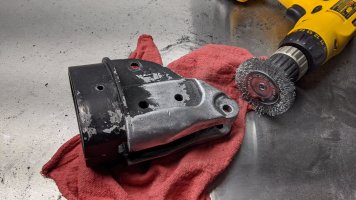tl;dr - Boom-to-gooseneck fitment was found to be loose. This thread is dedicated to the re-fitment of these pieces, as well as the cleanup and replacement of some frozen sheaves on the fitting at the end of the boom.
---
A few days ago, I was replacing the reefing lines on my 1985 Ericson 32-3 and some friendly forum members noticed the fitment of the gooseneck and boom were a bit 'off'..
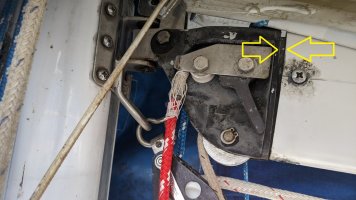
Upon closer inspection with the main sail off, I found the connection was quite loose and only being held in place by two screws, one on each side. The screw on the underside was gone, probably washed away into the depths somewhere. This seems to have made a bit of a vertical hinge action and the holes in the boom had been sheared wider over time.
I continued pulling things apart, dismounting the boom and removing the black end cap and gooseneck. Typical wear from a 35 year old boat was found on the bolt connecting gooseneck to the vertical toggle/tack fitting. The gooseneck itself appears to be in tact though, which is nice since the bolted end is the weakest point and tends to break. Here are some photos of the gooseneck and related accouterments:
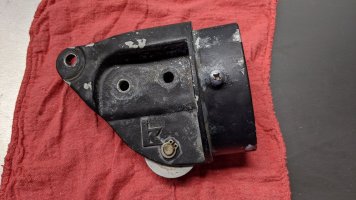
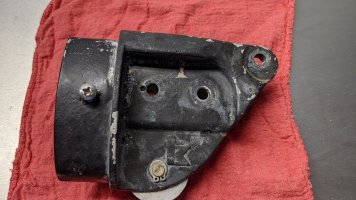
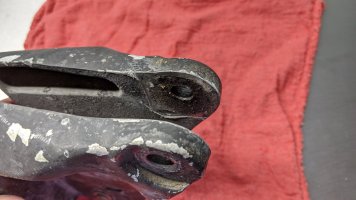
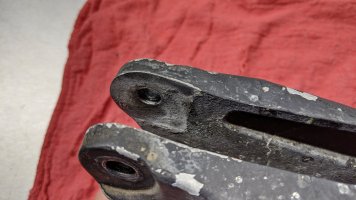
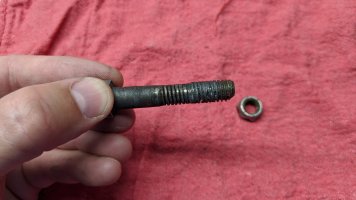
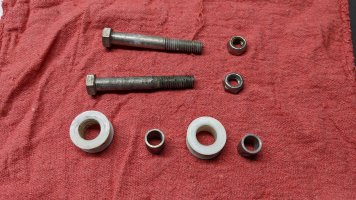
And a shot of the boom end cap with frozen sheave:
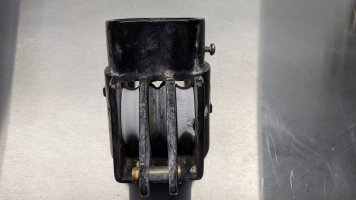
I'm planning on following Tom's repair plan found in his blog post, https://ericsonyachts.org/ie/ubs/boom-rehab.750/, including repainting and replacing sheaves. Additionally, I'm thinking of drilling new holes to reconnect the boom and gooseneck. My plan so far is to have two screws on each side and replace the missing screw underneath. Like so:
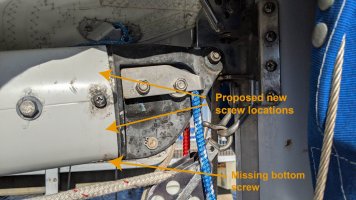
A few things come to mind, as I want to be careful:

---
A few days ago, I was replacing the reefing lines on my 1985 Ericson 32-3 and some friendly forum members noticed the fitment of the gooseneck and boom were a bit 'off'..

Upon closer inspection with the main sail off, I found the connection was quite loose and only being held in place by two screws, one on each side. The screw on the underside was gone, probably washed away into the depths somewhere. This seems to have made a bit of a vertical hinge action and the holes in the boom had been sheared wider over time.
I continued pulling things apart, dismounting the boom and removing the black end cap and gooseneck. Typical wear from a 35 year old boat was found on the bolt connecting gooseneck to the vertical toggle/tack fitting. The gooseneck itself appears to be in tact though, which is nice since the bolted end is the weakest point and tends to break. Here are some photos of the gooseneck and related accouterments:






And a shot of the boom end cap with frozen sheave:

I'm planning on following Tom's repair plan found in his blog post, https://ericsonyachts.org/ie/ubs/boom-rehab.750/, including repainting and replacing sheaves. Additionally, I'm thinking of drilling new holes to reconnect the boom and gooseneck. My plan so far is to have two screws on each side and replace the missing screw underneath. Like so:

A few things come to mind, as I want to be careful:
- Collect all the new stainless screws first, matching size to existing.
- Drill pilot holes with the gooseneck inserted into the boom and secured in place so it won't back out or move.
- The new top screws above should be relatively short so they don't interfere with the reefing lines running through the boom. Also a blunt end is probably a good idea.
- Should I consider adding some sort of material to the inside flange of the gooseneck to shore up the space which has been created over time? If so, what should I use? For reference, I had to tap out the boom end cap with a rubber mallet carefully. The gooseneck literally *fell* out of the boom it was so loose around the flange.
- Is it a good idea to use threadlock or similar to keep the stainless hardware in place?

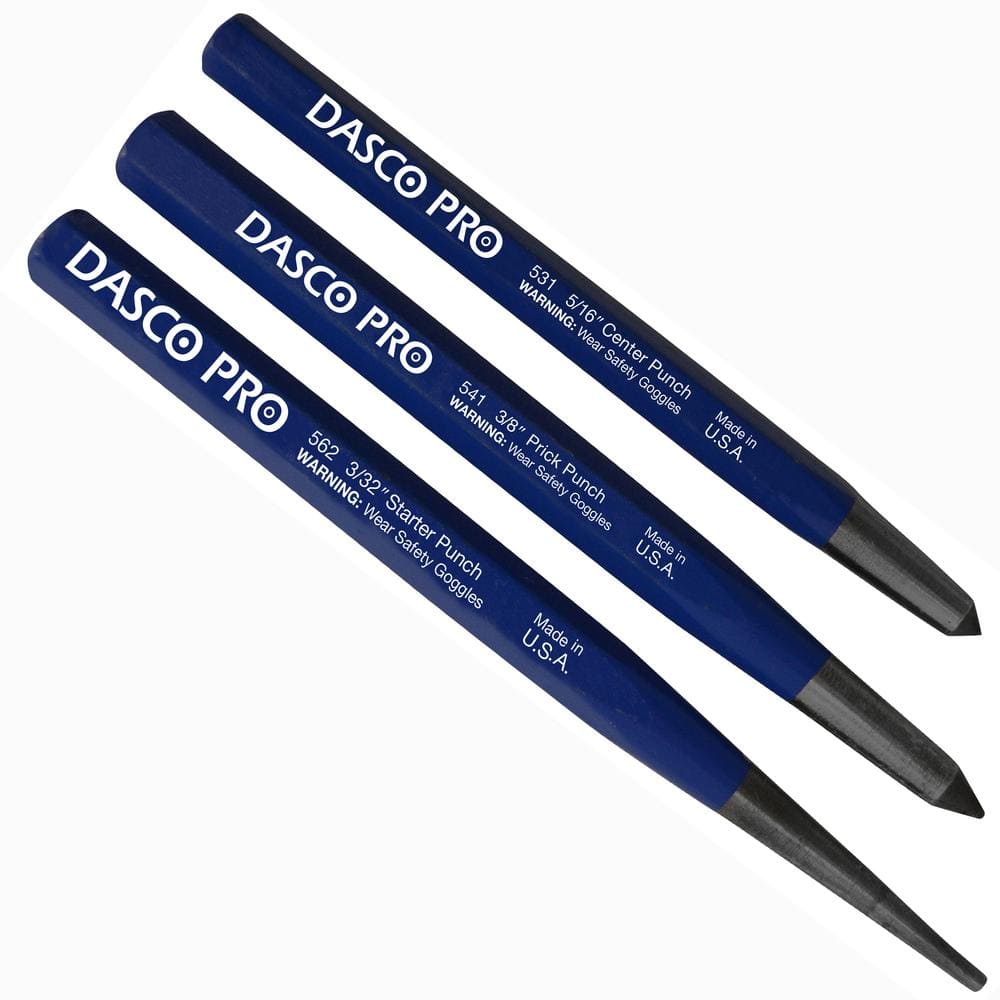
 ), so I won't be going far with the main halyard disconnected from the end of the boom where it's usually stowed as a temporary TL.
), so I won't be going far with the main halyard disconnected from the end of the boom where it's usually stowed as a temporary TL.